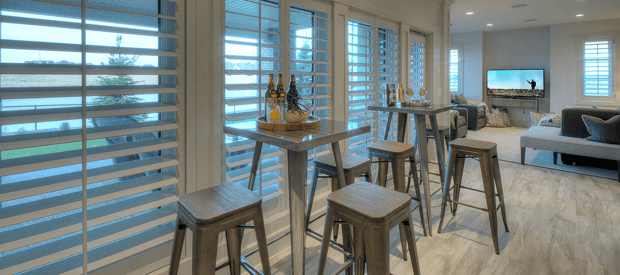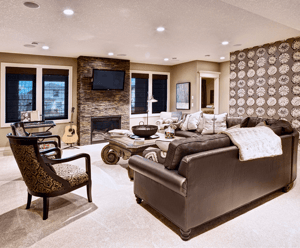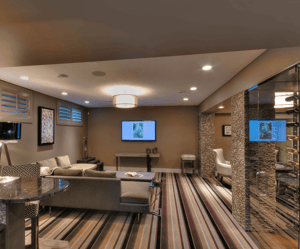 If you’ve ever seen a basement in an older home—like one hundred years old or more—you’ll know that basements were never intended to be an additional living space. Many homes had dirt floors, and it may surprise you to know that foundations were nothing more than large stones held together with mortar.
If you’ve ever seen a basement in an older home—like one hundred years old or more—you’ll know that basements were never intended to be an additional living space. Many homes had dirt floors, and it may surprise you to know that foundations were nothing more than large stones held together with mortar.
Of course today, a foundation like this would never hold up, especially in our fluctuating climate. These old homes would use the basement space, if at all, as a cold cellar to store canned and jarred foods.
We have come so far in the modernization of our home’s structures, so much so that we are now able to utilize this extra space as a complete living area within the home, or if you so choose a place for functional and effective storage. Whatever your intention with this additional space, there are some things you can include during the construction of your home to make your basement as functional as you need it to be.
 Ceiling Height
Ceiling Height
One of the most frustrating things about basements is often the height. If they are built to a standard 8’ height, once the ductwork is installed you’re left with less space, even more so once you drywall and install flooring. If you plan to do anything with your basement that will have you using the space often, perhaps consider increasing the height of your basement ceiling. Even going to just 9 or 10 feet height makes a significant difference to the spacious feel of your lower level.
Temperature
Naturally, living in our climate introduces uneven temperatures between the floors in your home, and any home you’ve lived in in the past has likely had a cold basement. If you're planning to turn your basement into living space of any kind, the last thing you’re going to want is to have to put on an extra layer of clothing just to spend time down there. Consider additional heating options such as a gas fireplace or in-floor heating to make the space far more comfortable and cozy.
 Those Pesky Teleposts
Those Pesky Teleposts
Although they are absolutely imperative to the structural integrity of your home, teleposts can really put a damper on your basement floor plan. Often a homeowner will attempt to build a floor plan around them, hiding them inside walls, but this severely limits your ability to maximize your space.
When planning your new home, consider replacing these teleposts with a steel beam. You may need to build a bulkhead around the beam (also another reason to build in extra height downstairs), but your floor plan will be wide open and ready for any layout you throw at it.
Recessed Lighting
This one might be a no-brainer, but having standard hanging lights in your basement limits the height and flexibility in your space. Install pot lights instead throughout your basement to maximize light distribution and minimize height restrictions.
Storage Solutions for the Trendy
Basement storage doesn’t need to be a complete catch-all for the rest of the home. Your lower level can be equally as beautiful as the rest of your home and still provide plenty of storage. Build in floor-to-ceiling, perhaps wall-to-wall shelving and cabinetry for organized storage, maybe with a desk built right into the design.
Be clever in your design with furniture that serves double-duty, such as hollow ottomans or a coffee table with drawers. If you require bulkier general storage, construct a whole room into an area of your basement that may not be functional for open living space.
Whatever you do, however, don’t cover up your sump pump, and be sure your flooring leaves easy access to your backwater valve should you ever need to use it.
Utility, Not Storage
When completing your basement, be sure to leave enough room around your furnace to be able to change filters easily, and room around all other utilities for repairs and replacement down the road. Also, your utility room should remain just that—a dedicated space to the organs that run your home. This room is not safe for general storage of any kind and shouldn’t be used as such.
Whatever your plans may be for your basement, by taking some additional steps during construction you’ll greatly elevate the potential for the right amount of fun and function you’ll need to enjoy your new home to the fullest.




